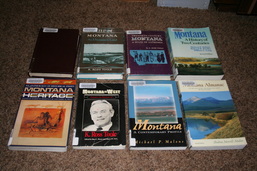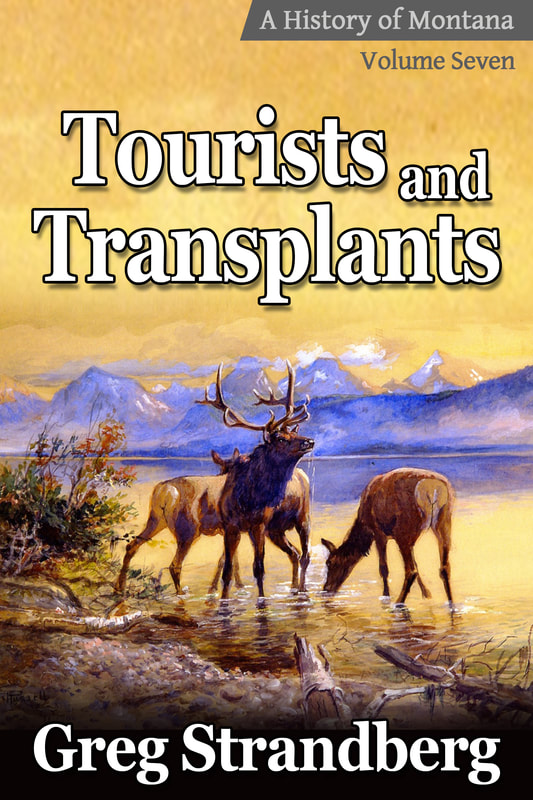 I picked these up from the Missoula Public Library today
I picked these up from the Missoula Public Library today
Chances are good you lived through some of that, maybe like my parents…who were born in ’53 and ’54. Maybe you remember your grandparents talking about some of that time as well, people born in ’19 or so, like one of my grandpas.
Other than that, I’m pretty sure you know about as much as I do, which ain’t much.
Oh, American history is a lot easier. We had the Depression and then the War and then Korea and then a helluva boom. Roosevelt, Truman and Eisenhower – that’s it.
So it should be pretty damn simple to write a history of Montana from 1930 to 1960 – not much happened.
Or did it?
So it’s a sleepy time in Montana history…or is it?
What if a lot of the groundwork and infrastructure and foundation for our current time, way of life and political situation came about during that time? What if a lot happened in Montana, but there’s never been anyone to tell you about it, or worse, they don’t want you to know.
Well, who the hell is they?
I’d have to say it’s our main villain of Montana history up until 1930, and that’s the out of state interests, the Anaconda Company, and generally Back East.
But what if that changes beginning around the Depression, what if our main villain evolves, and perhaps the villain and the hero begin to look the same?
No one knows Montana history during this time, and there are only about 3 to 4 secondary sources that touch upon it, most of them essay collections put together by either Harry Fritz of UM or Michael P. Malone of MSU. Besides that, all there is are the newspapers…and maybe a recollection or two from someone still living, or a relative of such.
- First, the federal government now becomes a big source of income for the state, replacing a lot of that eastern influence, but also creating another source of dependence for the citizenry and the state government.
- Second, a Diaspora-like situation comes about where you have large segments of the population leaving, setting down roots and starting families and creating connections, and then coming back to Montana.
I think both of these things lead us to our current situation, which is a state heavily dependent upon federal money, and also upon out of staters.
You see, when people left Montana for places like California and Oregon and Washington and wherever, they talked of ‘back home’ and spread the word of the state. That did a lot for tourism, especially after the terrible words everyone had to say of the state following the 1910s and 1920s agricultural and banking bust.
We have to trace this rise of tourism as the state’s dominant industry, and it is dominant, employing around 100,000 or more. Coal, in comparison, employs around 6,000.
We’re getting to a new story, one of workers not being represented and many not working at all – the feds allow it.
But we’re getting a bit ahead of ourselves. Just know that I’ll soon be starting on Book 5 of my Montana History Series, and I’ll be starting pretty dang soon.

